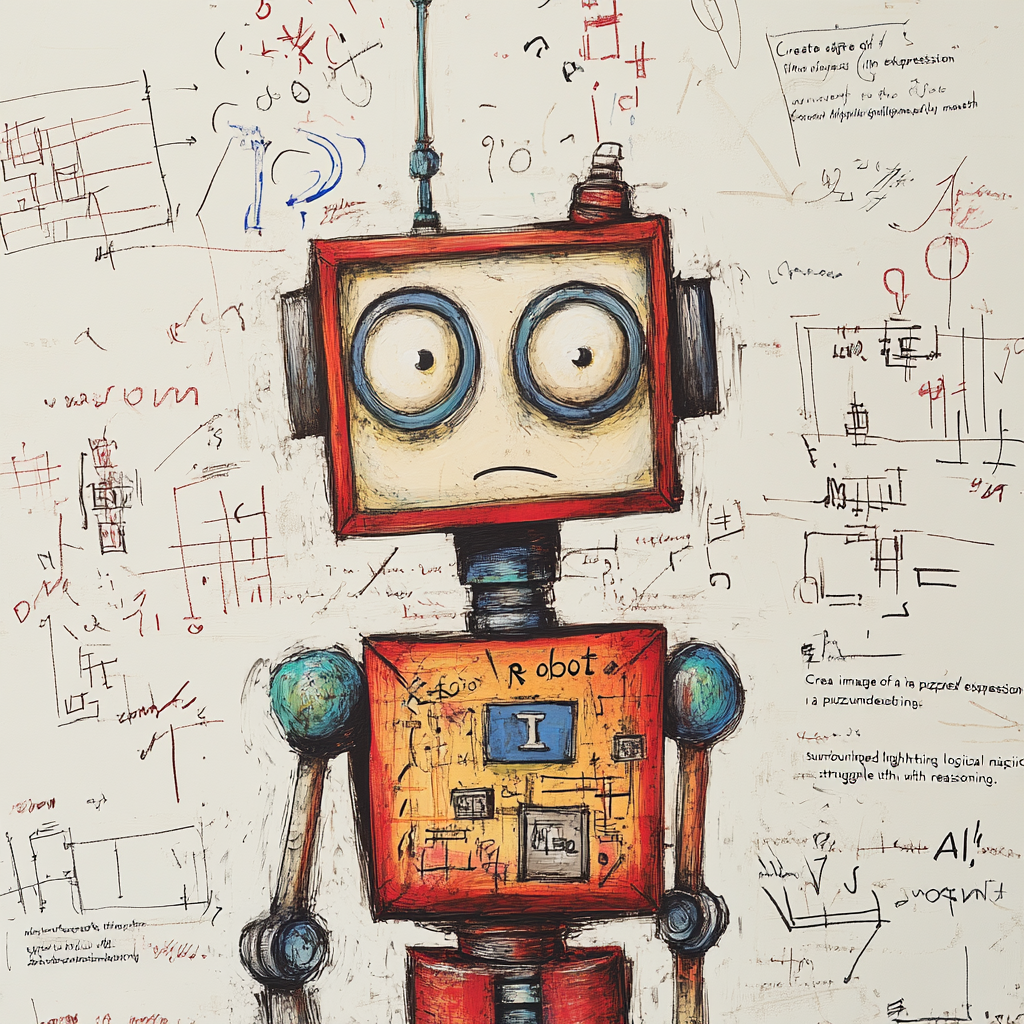
“Apple Researchers: AI’s True Nature Unveiled”
In the sprawling landscape of technological wonders, where smartphones keep us connected and social media brings the world closer, one might be lulled into a sense of ease when it comes to artificial intelligence. But let’s pull the curtain back on this shimmering spectacle and take a gander at the blurry line between true intelligence and the illusion of intelligence, as painted by Apple’s keen AI researchers in a recently unearthed study. Spoiler alert: the results might just leave you scratching your head.
The Illusion of Intelligence
When Apple’s team of brainy boffins turned their critical eye towards the realm of large language models (LLMs)—think of complex systems like those from Meta and OpenAI—they stumbled upon a rather shocking truth: much of what we admire is just a flashy mirage. It turns out that these models, despite their knack for producing eloquent text and mimicking human-like conversation, are not quite the intellectual giants we might hope for. They lack genuine logical reasoning capabilities, making them as reliable as a rain dance when it comes to solving intricate problems.
Picture this: you pose a simple question about the weekend antics of a character named Oliver and how many kiwis he picked, only to be met with an uninvited narrative on the size of kiwis—the kind of nuance that would send any reasoned mind for a loop. Instead of whipping out their mental calculator with precision, these models plunge into a murky swamp where irrelevant details lead to wildly incorrect answers.
Fragility in Mathematical Reasoning
Now, let’s dive deeper into the testing pool, where Apple researchers set the stage for a showdown with the GSM-Symbolic benchmark—a tool designed to pit these language models against tasks requiring mathematical reasoning. You might be surprised, or perhaps not, to learn that even the slightest tweak in the wording or a sprinkle of distracting details sent their accuracy plummeting to dizzying depths—sometimes by a jaw-dropping 65.7%. That’s akin to relying on a leaky bucket to carry your hopes and dreams.
The real kicker? These models aren’t grappling with the underlying mathematics; they’re busy playing a brilliant game of pattern recognition—call it statistical charades with a twist. They piece together answers based on the probability of word combinations rather than any solid understanding of what those words really mean. It’s like knowing all the lyrics to a song while still not having the foggiest idea about its essence.
How Modern AI Apps Work
Let’s shine a light on how these language-loving machines actually operate or, more aptly, how they stumble through the maze of human language. At their core, LLMs are powered by algorithms that analyze mountains of text data in an almighty quest to grasp language patterns. When they’ve had their fill of training, these models predict the next word based purely on the statistical likelihood that it fits—kind of like guessing the ending of a thriller you’ve never seen but knowing the genre.
But here’s the catch: the moment you throw a curveball into the mix—say by mentioning the size of the apples in a bag—the model gets lost in the sauce. It trips over trivial details that a human would effortlessly filter out. A human brain, after all, can separate the wheat from the chaff, but these digital darlings can’t seem to gain that kind of mental agility.
Implications and Future Directions
The ramifications of Apple’s findings are no small potatoes. They extend into realms that demand razor-sharp accuracy and sound logical reasoning—think finance, healthcare, and education. With our current LLMs floundering in complexities, entrusting them with vital decisions sans human oversight is like handing the keys of your car to an adorable but clueless puppy.
In the face of these setbacks, experts propose a treasure trove of solutions: fine-tuning, prompt engineering, and leveraging specialized AI subsystems could pave the way forward. Imagine a splendid duo of language models paired with mathematicians in the digital realm—sounds harmonious, right? Additionally, fresh innovations like retrieval-augmented generation (RAG) systems and the intriguing avenues of multimodal AI loom on the horizon, promising respite from the current reasoning turmoil.
The Risk of Overestimating AI Capabilities
Yet here lies the rub: the spellbinding allure of LLMs can lead us to inflate their capabilities. In a world where these chatty creatures can churn out text that appears uncannily human, there’s a risk that everyday folks, and decision-makers alike, might blindly ascribe them with a level of intelligence that’s nothing more than a mirage. Such assumptions could have adverse effects, especially in scenarios where precision and lucidity are non-negotiable.
Conclusion
Apple’s revelations should ring like a siren call—an invitation for the AI community to recalibrate its expectations and firmly ground itself in reality. While LLMs have indeed leaped ahead in their ability to process and generate language, they still lag behind in the cognitive dexterity necessary for tackling intricate reasoning tasks. A healthy dose of caution and critical thought is essential as we invite these silicon companions into more corners of our lives.
In a nutshell, today’s AI apps, admirable as they may seem, are just clever contraptions churning out text, not the deep thinkers we might wish for. They may simulate understanding, but true logical reasoning remains a distant dream, hidden just out of reach.
Want to stay up to date with the latest news on neural networks and automation? Subscribe to our Telegram channel: @channel_neirotoken.

